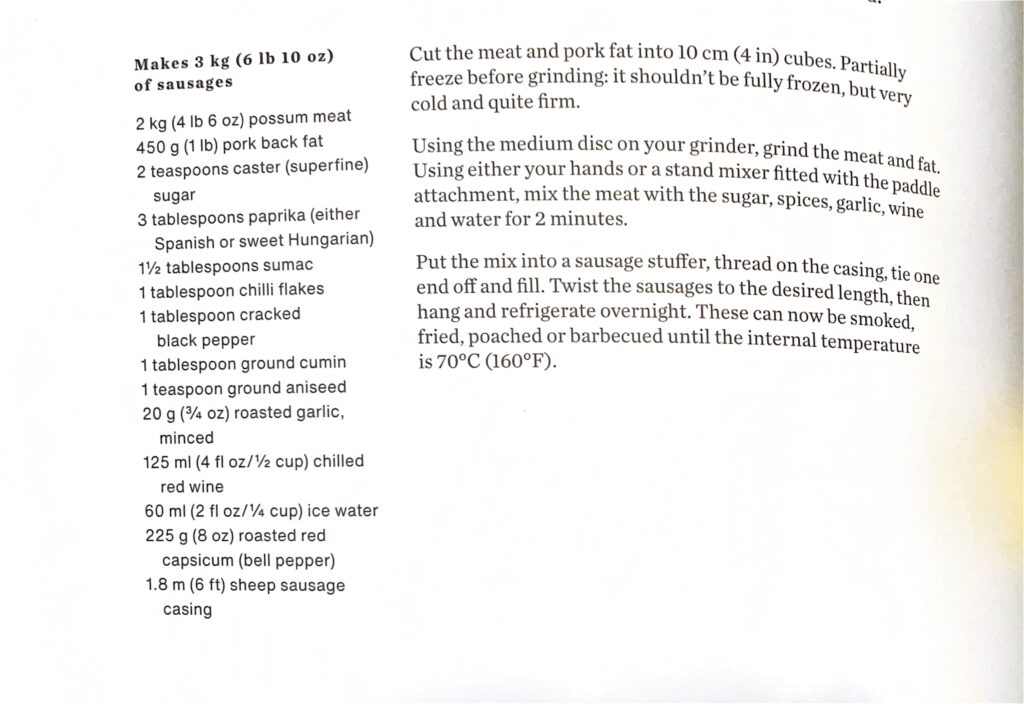I do intend to resume gun book blogging (and random gun crankery) soon.

Right now, I’m trying to finish the updates to the list of Texas congressional representatives. I’m about 1/3rd of the way through, and hope to have that done by the end of the weekend.
In the meantime, I thought I’d put up a quick post that’s sort of gun book related. Lawrence gets a fair number of possums in his yard. Or maybe just one possum, over and over again, that his dog keeps cornering. I don’t know for sure. I haven’t checked the serial numbers on his possums.
Anyway, I thought I’d throw this up as a preview from a forthcoming book: a recipe for “possum sausages”. I do think my use of this limited excerpt from How Wild Things Are by Analiese Gregory counts as “fair use”.

(Click to embiggen.)
One thing I do want to point out, though: Lawrence’s possums are the “Virginia opossum” (order Didelphimorphia). The possums the author is describing here are the “common brushtail possum” (order Diprotodontia), which are considered invasive in Tasmania. I suspect with enough pork back fat stuffed in, either one tastes good. Especially if you follow the recommended process of caging your possum for two weeks and feeding it fruit and veggies to reduce the “gamey” taste.
I do not know if the differences between Didelphimorphia and Diprotodontia make a difference to the cooking time or the taste of the possum sausage. I have not tried this recipe yet. (We don’t have a sausage/meat grinder. We do have a Kitchenaid stand mixer, but I would never buy the sausage stuffer attachment for it, as reliable sources say that is a POS.)

